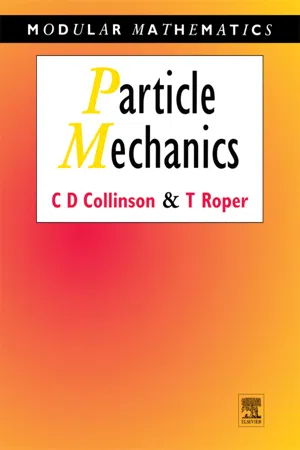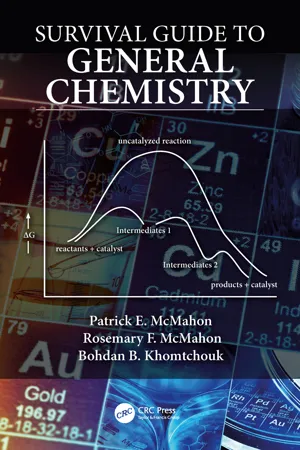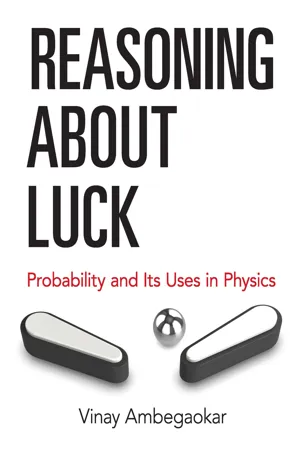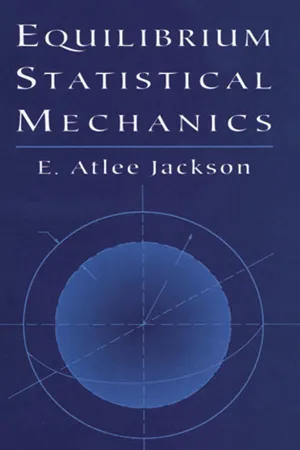Physics
Potential Energy Graphs and Motion
Potential energy graphs in physics depict the relationship between an object's potential energy and its position. These graphs show how potential energy changes as an object moves within a force field, such as gravitational or spring force. By analyzing these graphs, one can understand the behavior and motion of the object in different positions and how energy is transformed between potential and kinetic forms.
Written by Perlego with AI-assistance
Related key terms
Related key terms
1 of 4
Related key terms
1 of 3
6 Key excerpts on "Potential Energy Graphs and Motion"
- eBook - ePub
- Chris Collinson, Tom Roper(Authors)
- 1995(Publication Date)
- Butterworth-Heinemann(Publisher)
u. Show that this point is a distancefrom the origin. What can be said about the motion of the particle before it reaches this point?4. Show that the change in the potential energy stored in an elastic string in increasing its extension is equal to the increase in extension multiplied by the average of the tensions before and after the increase.2.5 Qualitative Discussion of Motion Based on the Energy Equation
In this section we will be concerned with the motion of a particle moving on a straight line with potential energy V (x ). Many of the features of the motion can be deduced from the graph of the potential energy. The slope of the graph, dV /dx , is equal to minus the force acting on the particle. Several simple deductions follow from this fact:• the slope of the graph is positive if and only if the force is negative; for motion confined to the region x ≥ 0 the force is directed towards the origin (such a force is called attractive )• the slope of the graph is negative if and only if the force is positive; for motion confined to the region x ≥ 0 the force is directed away from the origin (such a force is called repulsive )• the slope of the graph is zero if and only if the force and therefore the acceleration of the particle is zero at the corresponding stationary point of V (x )Fig 2.9 The potential of a force which changes character at x = x c .For the particular potential energy whose graph is illustrated in Fig 2.9 , the force is attractive at points in the region x < x c and repulsive in the region x > x c.Gravitational forces provide examples of forces which are attractive at all points.A full quantitive discussion of the motion of a particle moving with potential energy V (x ) depends on a second integration of the equation of motion as in the last section; here we will confine attention to a qualitative discussion of the most significant features of the motion. The method depends on the simple observation that the kinetic energy . It follows from the energy equation and so the particle cannot be located at points x for which the graph of V (x ) lies above the line V (x ) = E. For the sake of argument suppose that the graph of the potential energy V (x ) is as illustrated in Fig 2.10 and that the total energy E of the particle is such that the line V (x ) = E - eBook - ePub
- Patrick E. McMahon, Rosemary McMahon, Bohdan Khomtchouk(Authors)
- 2019(Publication Date)
- CRC Press(Publisher)
18 Concepts of Potential Energy, Enthalpy, and Bond Energy CalculationsI CONCEPT OF ENERGY Energy is the capacity to do work and/or to produce heat. It can be conveniently divided into potential energy and kinetic energy.Potential energy (PE) can be defined as energy stored based on the position or arrangement of matter. Potential energy can be released, for example as kinetic energy, in response to a force.Kinetic energy (abbreviated as kE) is the energy of motion of matter. Kinetic energy includes both the motion of bulk matter and the production of heat. Heat is thermal energy and is a measure of the kinetic energy of motion of individual atoms, molecules, or ions in bulk matter.Kinetic energy (kE) of matter is proportional to mass and the velocity: kE = ½mv2The metric units of the equation are (kg) × (m/sec)2 = (kg-m2 /sec2 ) = one JouleJoule (J) is the metric unit of energy; one kiloJoule (kJ) = 1000 J; 4.184 Joules = 1 calorie.Temperature (in °K) is a measure of the average kinetic energy of atoms and molecules.The law of conservation of energy (a form of the first law of thermodynamics) states that energy can neither be created or destroyed during any process in the universe: total energy of the universe is constant. Forms of energy are interconvertible; one relationship is the interconversion of kinetic and potential energy.An object at a height converts gravitational potential energy to kinetic energy of motion (bulk motion and heat) when it falls. Conversely kinetic energy can be converted back to potential energy if work is performed to lift the object back to its original height.Chemical potential energy stored in the electromagnetic force of chemical bonds can be converted to kinetic energy during a chemical reaction. For example, an explosion converts chemical bond potential energy to work, heat, (and light). Conversely, kinetic energy can be converted to chemical potential energy when it is consumed to form certain types of chemical bonds. - eBook - ePub
- Vinay Ambegaokar(Author)
- 2017(Publication Date)
- Dover Publications(Publisher)
2 becomes the square of the magnitude of the velocity vector. In this more general case one needs a principle besides the constancy, or conservation, of energy to deduce the trajectory of a falling body. The needed principle follows from the fact that there is no force in the horizontal direction, and thus from Newton’s laws no change in the horizontal component of the velocity. From these two ‘conservation laws’ it is possible to deduce that the trajectories are parabolas.There are other forms of potential energy in nature. For example, consider a massive object at the end of a spring vibrating to and fro. Viewed in terms of the energy balance, this is a process in which energy is being passed back and forth between kinetic energy, for which the formula is the same as the one we just derived, and the potential energy associated with the stretch or compression of the spring.‡† Equation (6.22) brings home the fact that massive objects subject only to gravitational forces all move in the same way, i.e. independently of their mass. This (experimentally confirmed) fact has come about because of the occurrence of the same M in two physically quite different contexts: Newton’s Second Law, where it describes the inertia – or sluggish unwillingness to accelerate – of matter, and Newton’s Law of Gravitation, where it describes the strength of the attraction to other massive bodies. The equality of ‘inertial’ and ‘gravitational’ mass is central to Einstein’s General Theory of Relativity, in which it is also true that motion in a given gravitational environment is independent of mass.‡ See solved problem (4).What happens when our falling apple hits the earth? Obviously, its - eBook - ePub
AP® Physics 1 Crash Course Book + Online
Get a Higher Score in Less Time
- Amy Johnson(Author)
- 2016(Publication Date)
- Research & Education Association(Publisher)
. (The box could also have gravitational potential energy, depending on where you chose zero height to be, but because it is sliding across the table, and not changing height, it will have the same gravitational potential energy at the end as it did in the beginning.)iv. The work done by the student in compressing the spring is equal to the energy stored in the spring. F. ENERGY DIAGRAMS 1. An energy bar chart is a tool used to show understanding of the work-energy theorem. In a work-energy bar chart, a bar is drawn for each form of energy, and the sum of all the types of energy plus the work done on the object by the external forces equals the sum of all the final energies.2. The exact heights of the bars are not important, but the relative heights of the bars are.3. For example, when a box of mass (m) is released from rest and slides down a frictionless incline, the energy diagram looks like this:Initially, the energy is all gravitational potential energy. Since the incline is frictionless, there are no non-conservative forces acting on the box, so the final energy should be equal to the initial energy. The final energy of the box is kinetic.4. If the incline was not frictionless, the bar chart would have to include the work done by friction. Because the work done by friction will be negative, the bar for work will be below the zero line.You will likely find questions on the AP Physics 1 exam asking you to sketch an energy bar chart instead of solving for a final answer. For example: a box, initially traveling at speed (v), is pushed in the direction of motion by a force (F) for time (t). After time (t), the box has a speed (2v). Sketch an energy diagram for the box.Notice you are not asked to specifically solve for the final kinetic energy of the box, nor are you asked to solve for the work done on the box. But, in order to sketch the bar chart accurately, think about what these two quantities will be equal to. - eBook - ePub
Newtonian Dynamics
An Introduction
- Richard Fitzpatrick(Author)
- 2021(Publication Date)
- CRC Press(Publisher)
y-component of the acceleration, for the sake of simplicity. The physics of motion under gravity in more than one dimension is summarized by the three equations (3.62)–(3.64). Let us examine the last of these equations:(5.12)v=2v 0+ 2 a · s .2Figure 5.1Coordinate system for two-dimensional motion under gravityHere, v0 is the speed att = 0, v is the speed att = t, ands = ( Δ x,Δ z )is the net displacement of the mass during this time interval. Recalling the definition of a scalar product [i.e.,a · b = (], the previous equation can be rearranged to givea xb x+a yb y+a zb z)(5.13)1 2mv−21 2mv 0= − m g Δ z .2Because the left-hand side of the previous expression is equal to the increase in the kinetic energy of the mass between timest = 0andt = t, the right-hand side must equal the decrease in the mass’s potential energy during the same time interval. Hence, we arrive at the following expression for the gravitational potential energy of the mass;U = m g z .(5.14)Of course, this expression is entirely equivalent to our previous expression for gravitational potential energy, Equation (5.4). The previous expression merely makes manifest a point that should have been obvious anyway; namely, that the gravitational potential energy of a mass only depends on its height above the sea level, and is quite independent of its horizontal displacement.Let us now try to relate the flow of energy between the gravitational field and the mass to the action of the gravitational force,f = ( 0 , − m g ). Equation (5.13) can be rewrittenΔ K = W = f · s .(5.15)In other words, the work, W, done by the force f is equal to the scalar product of f and the vector displacement, s, of the body upon which the force acts. It turns out that this result is quite general, and does not just apply to gravitational forces.Figure 5.2 is a visualization of the definition (5.15). The work, W, performed by a force f when the object upon which it acts is subject to a displacement s - eBook - ePub
- E. Atlee Jackson(Author)
- 2012(Publication Date)
- Dover Publications(Publisher)
models (simplified pictures) of atoms, molecules, gases, and solids will illustrate the various types of interactions between particles. Finally, we shall consider some of the important modifications of these classical models that are required by quantum mechanics.2. KINETIC AND POTENTIAL ENERGY
To begin with, let us consider a particle moving in space as it is described in classical mechanics. The position of the particle r (t ) = x (t )i + y (t )j + z (t )k [where (i, j, k ) are the unit vectors in the (x , y , z ) directions] generally varies in time and has a velocityIf the particle has a mass m, it is said to have a kinetic energy (sometimes called the translational energy )(1)If a force F acts on the particle, its velocity will change according to Newton’s law(2)If no force acts on the particle, then it follows from Equation (2) that v is independent of the time, and consequently the kinetic energy is also a constant. We can also see this from the fact that(3)which vanishes if F vanishes.Now the force that acts on the particle generally depends on the position of the particle r and sometimes also on the velocity (e.g., frictional forces, or the force on a charged particle moving in a magnetic field). If the force depends only on r and if it can be expressed in terms of the gradient of some function Φ
Index pages curate the most relevant extracts from our library of academic textbooks. They’ve been created using an in-house natural language model (NLM), each adding context and meaning to key research topics.
Explore more topic indexes
Explore more topic indexes
1 of 6
Explore more topic indexes
1 of 4





